 |
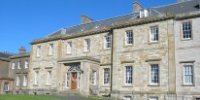 |
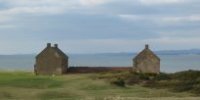 |
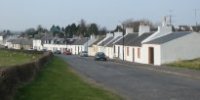 |
Articles |
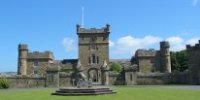 |
Copyright notice: Links to this site are welcomed. However none of the material on the site may be duplicated in any form. The copyright of the articles is the property of the authors. Copyright of the web pages is the property of David McClure. |
Drowned while hunting with his otter-hounds
by David Courtney McClure
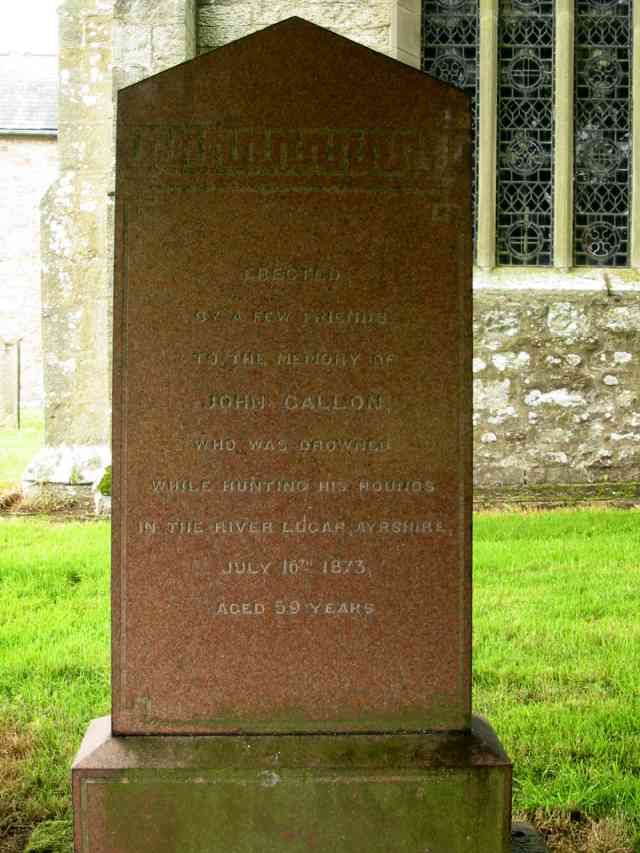 |
The memorial stone in Elsdon churchyard. |
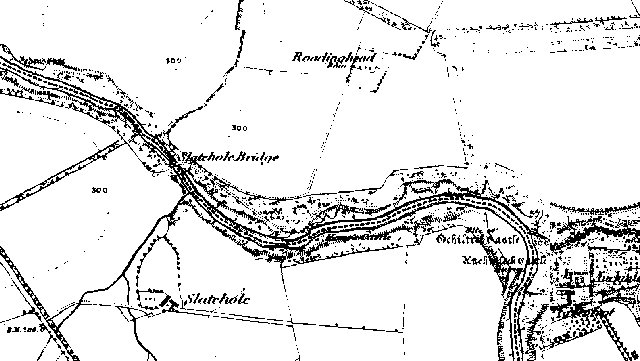 |
A stretch of the Water of Lugar in the vicinity of Slatehole Bridge. From the First Ordnance Survey, 1860. |
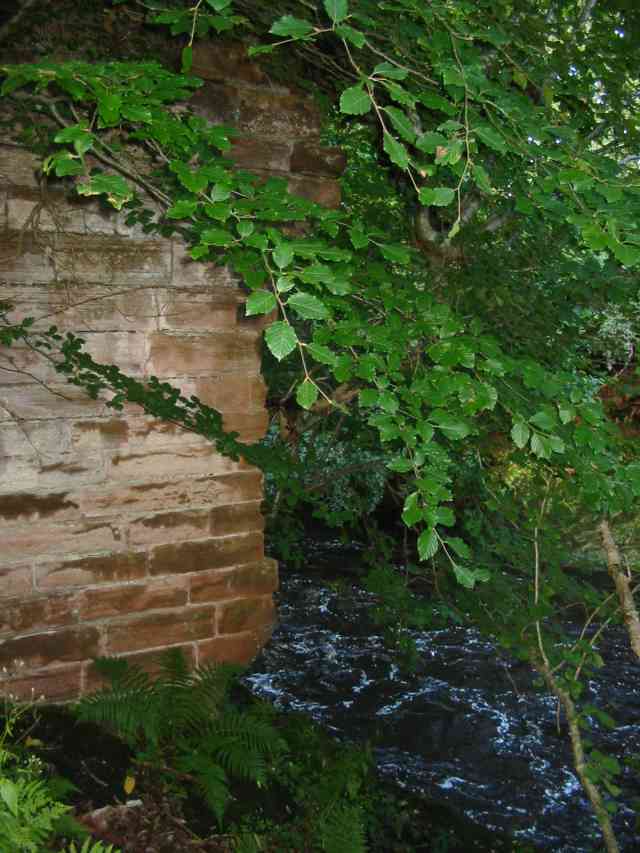 |
The remains of Slatehole Bridge on Lugar Water. |
I am indebted to Drew Moyes for spotting a memorial stone in the churchyard in Elsdon, Northumberland, with an Ayrshire connection. It bears the following inscription: 'Erected by a few friends to the memory of John Gallon, who was drowned while hunting his hounds in the River Lugar, Ayrshire, July 16th 1873, aged 59 years.'
It is a memorial stone rather than a headstone, since John Gallon's remains were presumably interred in Ayrshire. [Or so I thought. See the postscript below (9 March 2007)].
John Gallon was master of the otter hunt which met at 7.30 that morning at Barskimming House, which stood above the River Ayr. Upstream, a little way above Barskimming Old Bridge, the Ayr is joined by the Water of Lugar. The otter hounds headed up the Lugar towards Ochiltree. From the account of Gallon's death in the Ayr Advertiser (see below) it is apparent that he met with his misfortune downstream of Slatehole Bridge, where the river is constrained in a narrow defile between high banks of sandstone rock crowned with trees. The rest of the party gathered at the bridge. When he failed to make an appearance and they did not hear the cry of his horn, they began to search for him. Slatehole Bridge spanned the Lugar almost due north of Slatehole Farm. Tracks to it on either bank of the Lugar can be seen on the O.S. One Inch Series map, Sheet 67, published in 1964, though with no trace of a bridge. The O.S. Landranger 1:50,000 map, sheet 70, published in 1988, shows a track on the right bank only.
A recent inspection of the site revealed the remains of the bridge on the left bank. The substantial buttress stands above the present level of the water, and above it the sandstone blocks of the sides of the bridge extend up to the parapets and road surface. It was a narrow bridge, suitable for pedestrians and possibly horses, but not for carts and carriages.
'Melancholy Accident'
From the Ayr Advertiser, Thursday July 17th, 1873, 4e.
'Yesterday morning the pack of hounds belonging to J. Gallon, Esq., near Newcastle, met at Barskimming House at 7.30. A considerable number of lovers of the sport mustered, and a start was made under the guidance of the well-known and highly appreciated master, Mr John Gallon. The hounds at once gave tongue, and went at a rattling pace up the Lugar for about a mile above Barskimming House, where a precipitous rock on either side of the stream, with an extremely narrow border below on which to pass, renders following the bed of the river almost impossible. Here Mr Gallon must have endeavoured to pass, but the other followers (none of whom were at the time in sight of him) left the bed of the stream lower down, and through plantations took the nearest course to Slatehole Bridge, to await his arrival with the hounds. His non-appearance, however, at the expected moment created no great surprise, as it was thought he had either got before his friends or taken a nearer way to a bend further up the river (the hounds being in full cry), but on their going about a mile further on, they fancied he could not have gone so far without their hearing his horn, or some other symptom, and resolved to turn back in search of him. On arriving at Slatehole Bridge they learned that no trace of him had been see, and after sending scouts up and down the river unsuccessfully, their most anxious fears were aroused. A raft made of a cart and ladders was constructed, and a grappling iron procured from a smithy near at hand, and after about an hour's dragging the body was found about 150 yards below the bridge. The unfortunate gentleman had thus lost his life while hunting and cheering on his hounds at the sport he so dearly loved. We understand that he could not swim. Mr Gallon as for the last 40 years been well-known and justly esteemed by all lovers of otter hunting as a thorough-going and most energetic amateur master and huntsman, and his loss will be sincerely regretted by all sportsmen on both sides of the Tweed. He was in his 61st year, and leaves a widow to lament his untimely fate.'
David Courtney McClure
Subject: Grave of John Gallon, Elsdon Churchyard Northumberland
Date: 09 March 2007 15:31
Dear Mr. McClure,
I discovered your Ayrshire website during a google search for all things
Elsdon on the web, and was surprised to find the article on
John Gallon. I have often stood in front of his impressive headstone,
the only one in red granite in the churchyard, and wondered what the
story was. Locally, little is known about him except that, according
to the Burial Register, he lived 22 miles away, at Street House Ponteland,
Northumberland.
"It is a memorial stone rather than a headstone, since John Gallon's remains were presumably interred in Ayrshire."
The register also confirms that he is indeed buried in Elsdon Churchyard, he having been interred there three days after his death on the 19th July 1873. Why he is buried here I have yet to discover as there is a parish church in Ponteland. It may very well be that he was born here but I am unable to ascertain this at the moment, as the registers in my posession only go back to 1837, the earlier ones having been loaned out by my colleague, and are therefore navailable at present.
If you agree, I would like to use the article either in its entirety or in edited form in our church magazine, and possibly as an addition to our Village Atlas and respectfully request your permission to do so. It would be yet another small piece in the ever growing historical jigsaw of this ancient community.
kind regards,
Keith Maddison